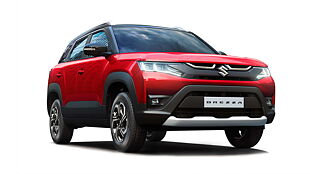Introduction

The Maruti Suzuki Swift revolutionised the Indian car market. It was a watershed for the industry and from the Swift on car manufacturers started believing that they could launch contemporary cars that commanded a premium, that style was appreciated to such an extent that people were willing to pay for it. And now six years after its launch in India, the Swift becomes one of the few cars that move into their next generation without having reached the bottom of their sales charts and still being one of the leaders of their segments. Only a company like Honda has had the courage to do that repeatedly in the past while most of the others have succumbed to the temptation of selling two generations of the same car simultaneously.
Looks and Interior

For the Swift however this was not going to be a possibility even if Maruti-Suzuki wanted to retain the two generations. This because the new Swift looks so much like the old Swift that it takes only a well-versed eye to spot the differences. Suzuki thought not to fiddle around much with a winning formula and sought only to take care of the most glaring drawbacks that came through user and buyer feedback.
Thus the essential style of the car remains the same but there are a few crucial changes. Both the headlamps and the tail cluster are much larger, with both being wrap-around and the headlamps upswept design giving the Swift an even more distinctive look.

Larger seems to be the theme for the new Swift as the car itself is larger – a 20mm longer wheelbase that leads to a 40mm increase in length and a 5mm increase in width. While the increase at 2cm may sound miniscule, it adds to the spaciousness of the cabin leading to a 25mm increase in kneeroom and an even larger increase in legspace for the rear passengers.
However, the increase in length is not the sole contributor to the spaciousness of the cabin. Redesigned front seats with concave backs and a totally redone interior also add to the upmarket and premium feel of the cabin say the Maruti engineers. How much better the interiors may be questionable but there is no denying that these add new life to the car and are refreshing, bringing in several new features and conveniences.
The integrated music system from Panasonic for instance now plays through four speakers and two tweeters while the instrument cluster has a trip computer display with fuel efficiency data well. The display for time and outside temperature though also moves from the centre of the dashboard to this display between the speedo and tacho dials.
The drive

But the changes aren’t all cosmetic even though the indicators on the outside rear view mirrors may indicate so. The petrol engine, which is unique to the Indian Swift now gets variable valve timing on the intake valves (VVT), which makes the engine both more efficient and more powerful. The engines on both the petrol and diesel cars are now mounted using hydraulic units thereby decreasing the noise and vibrations felt inside the cabin. Maruti again claims that the sound is down by upto 3dB. While the efficiency of the engines and the size of the car has increased the weight of the car has decreased. This has been made possible by the use of higher tensile strength steels as well as the switch to a polymer fuel tank from a steel one earlier.

The use of higher strength steel also results in a body with higher torsional rigidity which benefits the ride and handling characteristics of the car. And in keeping with the car’s original sporty character, though its suspension will still be amongst the sportiest in the Maruti range, it too has been retuned for better ride quality.
With three variants for both the diesel and petrol engine options, there has been an upgrade in the levels of equipment available even in the base variant.
Verdict

That the Swift was a path-breaking car there is no denying. That it was being slowly overtaken by more contemporary cars in terms of the value offering and outright space is also true. So while Maruti has retained the original image of the car, they have considerably upped the value offering as well as addressed the concerns about looks and space while giving it much more premium looking interiors. Added to that is the increased efficiency and better ride and NVH, the Swift is now a much better car. However the crucial and deciding factor on this car’s success will be how much extra will the consumer have to pay for the features and that little extra space. Hopefully not much!
![Maruti Suzuki Swift [2011-2014] Image Maruti Suzuki Swift [2011-2014] Image](https://imgd.aeplcdn.com/272x153/cw/cars/discontinued/maruti-suzuki/swift-2011-2014.jpg?q=80)























